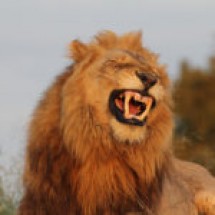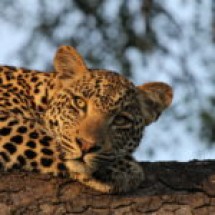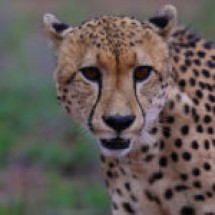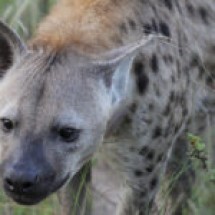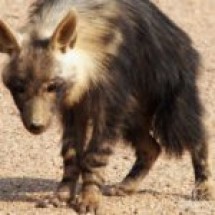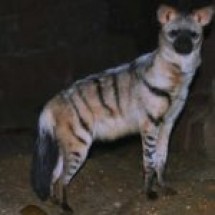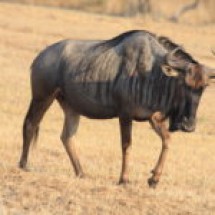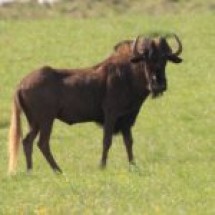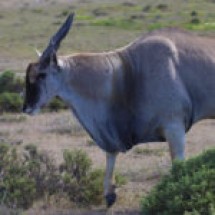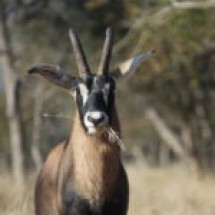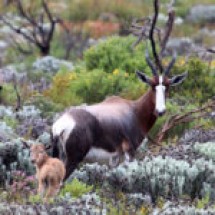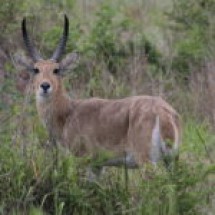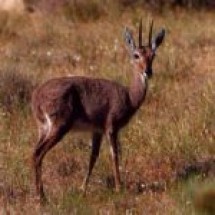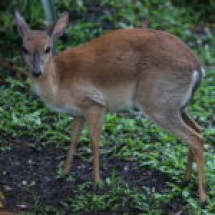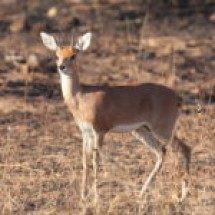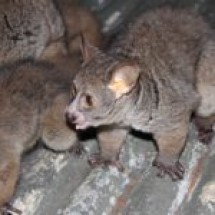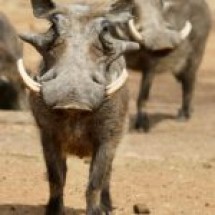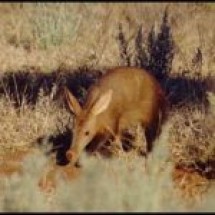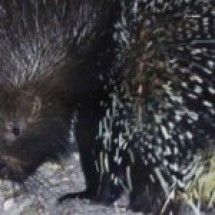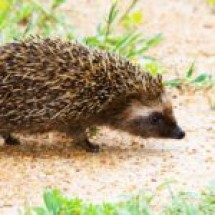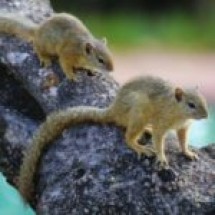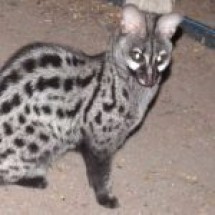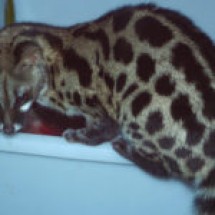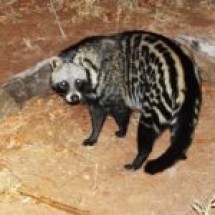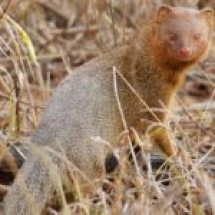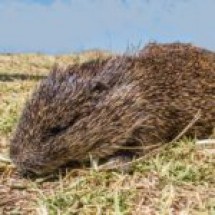A Cape hare will return to its form day after day, and will sleep lying in exactly the same position: it is only when under stress that it may take alternative refuge in the underground burrow of some other animal. After dark it emerges to feed on grasses and sometimes on other plants. The upper incisors are long and chisel-like and they grow throughout the hare’s lifetime. When two males fight, (usually when a female is on heat), they stand on their hindlegs and slash at each other with the claws of their forefeet.
Their behavior when they are angry includes the grinding of teeth, drumming of forefeet and stamping of hindfeet. Despite their name, Cape hares occur throughout Africa, as well as many parts of the Middle East and Asia. Usually two young are born: they are precocial, being born fully haired with their eyes open, in a form in a clump of grass or under a bush. In the early stages of life they do not seem to have a body scent, as they are passed over by dogs. They develop very quickly, and are weaned and independant at about a month old.
DISTRIBUTION
The Cape Hare is predominantly nocturnal, and rests by day concealed in shallow depressions: when disturbed, it will suddenly leap up and dart off using a zigzag motion. The sudden sideways leaps help to throw off predators, such as dogs. The resting places are known as ‘forms’ because they are shaped by the animal’s body.





